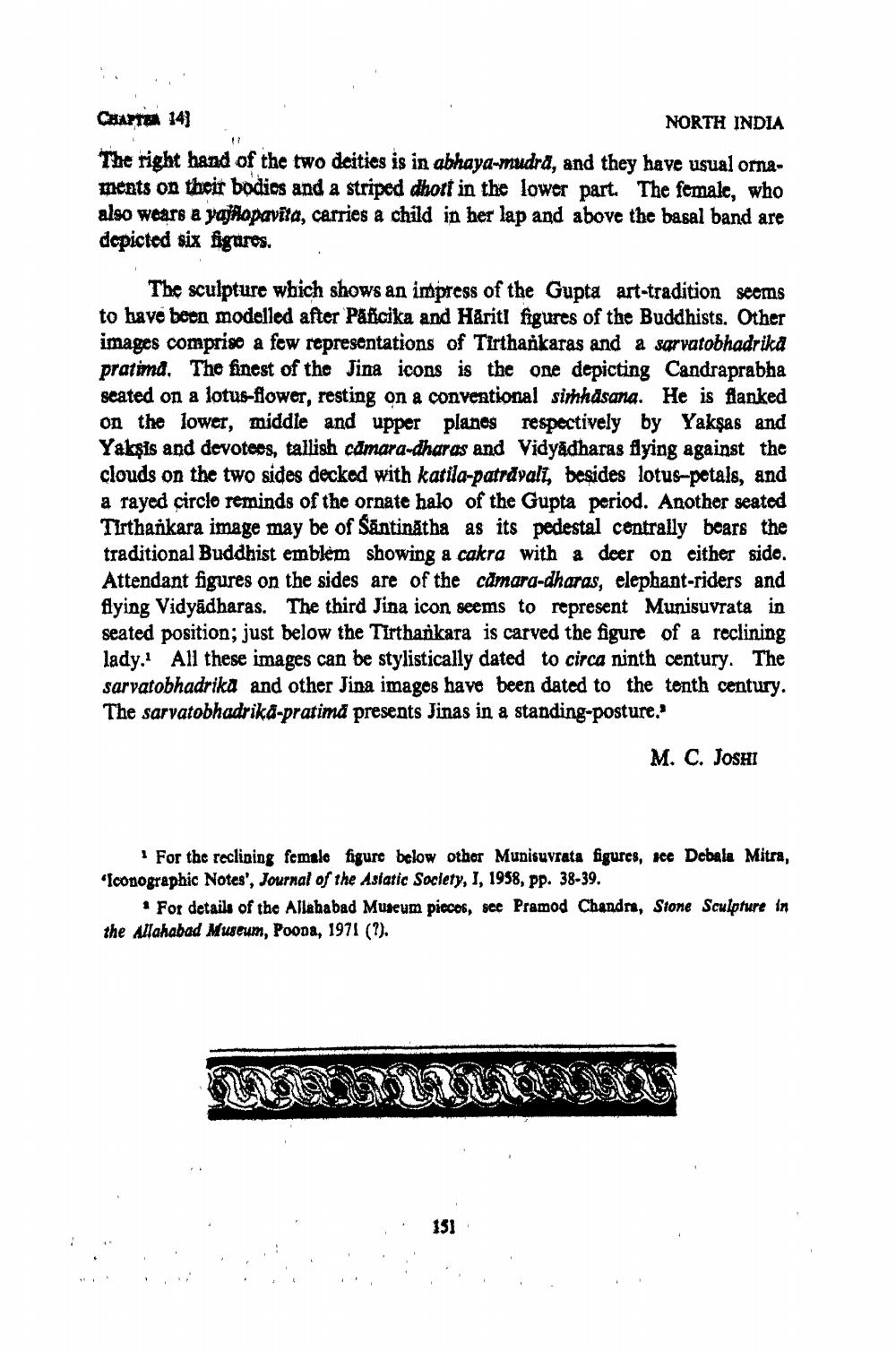________________
CHAPTER 14]
NORTH INDIA
The right hand of the two deities is in abhaya-mudra, and they have usual ornaments on their bodies and a striped dhott in the lower part. The female, who also wears a yajilopavita, carries a child in her lap and above the basal band are depicted six figures.
The sculpture which shows an impress of the Gupta art-tradition seems to have been modelled after Päficika and Härit! figures of the Buddhists. Other images comprise a few representations of Tirthankaras and a sarvatobhadrikā pratima. The finest of the Jina icons is the one depicting Candraprabha seated on a lotus-flower, resting on a conventional simhasana. He is flanked on the lower, middle and upper planes respectively by Yaksas and Yaksis and devotees, tallish camara-dharas and Vidyadharas flying against the clouds on the two sides decked with katila-patrāvalī, besides lotus-petals, and a rayed circle reminds of the ornate halo of the Gupta period. Another seated Tirthankara image may be of Santinatha as its pedestal centrally bears the traditional Buddhist emblem showing a cakra with a deer on either side. Attendant figures on the sides are of the camara-dharas, elephant-riders and flying Vidyadharas. The third Jina icon seems to represent Munisuvrata in seated position; just below the Tirthankara is carved the figure of a reclining lady. All these images can be stylistically dated to circa ninth century. The sarvatobhadrika and other Jina images have been dated to the tenth century. The sarvatobhadrikä-pratimă presents Jinas in a standing-posture."
M. C. JOSHI
For the reclining female figure below other Munisuvrata figures, ace Debala Mitra, 'Iconographic Notes', Journal of the Asiatic Society, I, 1958, pp. 38-39.
* For details of the Allahabad Museum pieces, see Pramod Chandra, Stone Sculpture in the Allahabad Museum, Poona, 1971 (?).
151




